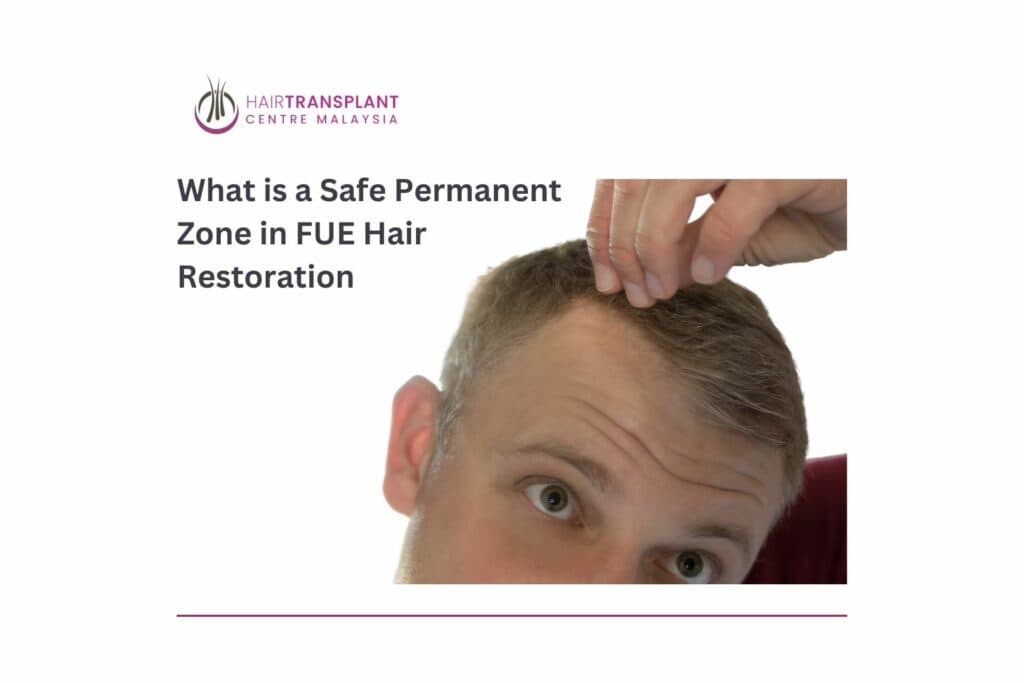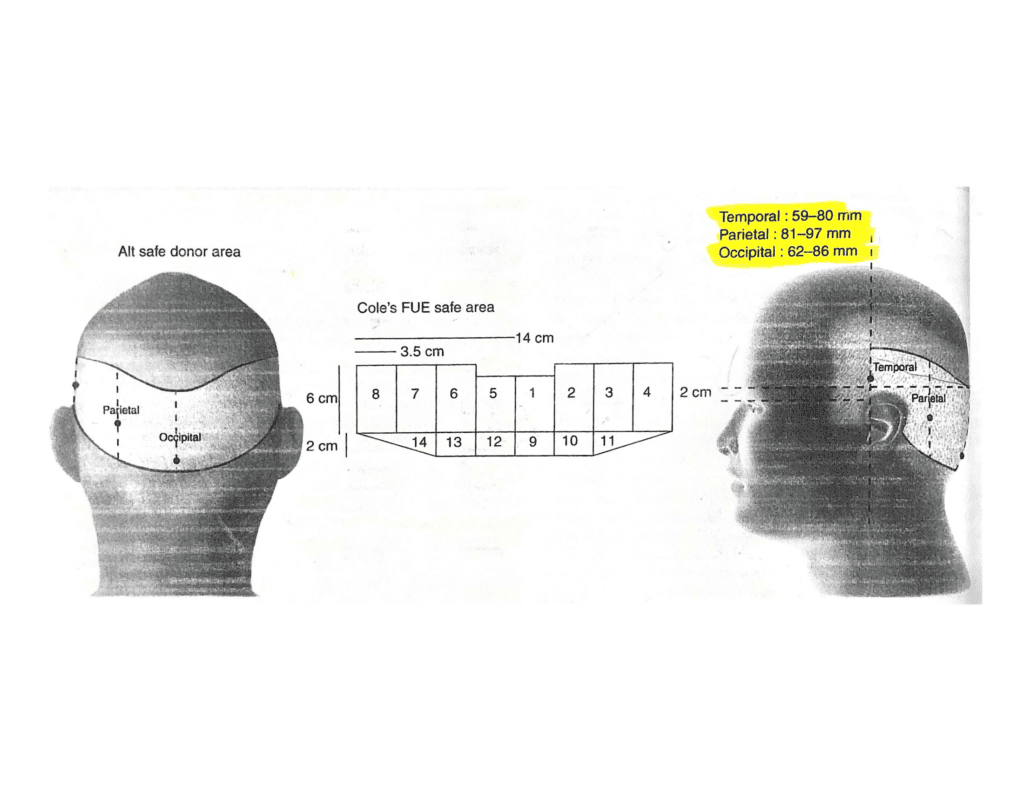What is a Permanent Safe Zone for FUE Hair Restoration
The science underlying a hair transplant is pretty straightforward. Hair is collected from the “safe zone” and transferred to balding regions. The safe zone is a region on the sides and back of the head where the hair is resistant to DHT, a hormone that promotes hair loss. Hair falls out on the top or crown of the head for the majority of persons with pattern baldness, leaving the sides unaffected by hair loss. The thicker the donor area, the better the transplant results.
The image below depicts the best location for a donor hair harvest.
This region is highly inhabited with robust hair. When the donor hair is taken from this region to be utilized elsewhere, the amount of hair that remains is thick enough to compensate for the hair that was transplanted. Because of the density seen in this region, many patients may require numerous hair transplants over the course of their lives.
Let us call you

Can Donor Hair Come From Another Area or Safe Zone?
Yes. Hair from other body areas, such as the beard, chest, arms, and legs in hairy people, can be used as an additional donor source on some occasions.

Limitations And Advantages of Safe Zone
Although the scalp permanent zone typically follows a predictable pattern in males with male pattern hair loss. The limits of a permanent zone in a temporal region may be difficult to establish. Many guys never lose their temporal hair. In most situations, temporal hair retraction can dramatically age the appearance of a patient’s face. As a result, restoring the temporal hairline is typically one of the most gratifying aspects of a hair restoration. Determining the borders of the permanent zone assists surgeons in determining the maximum number of possible grafts for an operation. It helps to prevent collecting hair from regions that do not have permanent hair. Finally, it avoids future exposure of the strip surgery donor scar.
Creating thirty to forty percent density in the front and top may be quite rewarding for a hair loss patient. However, the existence of a dense temporal region might compromise these excellent findings. The difference between a dense temporal area and a nearby transplanted area with less than 40% density may be too obvious. A hair transplant surgeon may opt to take hair from the temporal area not just to provide a bigger source of hair, but also to achieve a balanced and natural end outcome.
This area of hair is known as the “Safe Zone” or ‘safe’ or ‘permanent’ zone. Hair that grows in this area is genetically designed to last a lifetime. Hair transplants take use of nature’s gift. Hair transplant involves taking hair from this zone, known as the donor zone, and transplanting it to bald regions.
Because only permanent hairs have been transplanted, the transplanted hairs will endure for the rest of one’s life. These hairs are genetically intended to endure a lifetime and so will not succumb to baldness – the person will maintain these hairs for the rest of his life.


